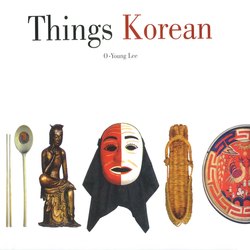Читать книгу Things Korean - O-Young Lee - Страница 24
На сайте Литреса книга снята с продажи.
ОглавлениеRice Cake, an Event in Itself
Ddok
Scholars of folk history say that Koreans were eating rice cake even before that ordinary rice we see these days at every meal. So rice cake enjoys a certain distinction.
It is special for another reason. While we have rice every day, rice cake is associated with days on which we celebrate something with a special meal. With the approach of New Year's, or the Harvest Moon Festival (around the time of America's Thanksgiving), indeed any of the traditional holidays, we can hear them milling their rice flour all over town. Rice cake makes its appearance again when sister gets married, and then again when we hold a memorial service for our departed.
Rice looks the same and tastes the same and is served in the same bowl day in, day out 365 days a year. But rice cake is a distinct event. How it looks and tastes depends on the season and on the nature of the celebration. The layered rice cake, made from non-glutinous rice and flavored with young mugwort leaves or the budding leaves of the zelkova tree, means spring is here. And that crescent rice cake made of glutinous rice, filled with bean paste and sprinkled with pine needles, means autumn is just around the corner.
In addition to holidays and seasons, rice cake hosts momentous events. There is the First Birthday rice cake, which celebrates the miracle of baby's first uncertain steps on his earth. There is birthday rice cake, marking another inch or two and a firming of the skull. And, on the first day of the first lunar month, we also share our rice cake with those loved ones who have departed this world before us, when the spirit of our old country-rustic great grandfather drops by for a visit. As the poet Yi Sang wrote, ‘‘Out wafts that wholesome aroma of fresh-steamed pumpkin rice cake, and in drifts grandfather."
Rice cake provides a deviation, the feeling of something exceptional happening, and transports us out of the old rut to somewhere new. It highlights and even recasts memorable events in our life.
Rice cake, though, is not such a special event only for what it symbolizes. It not only uplifts the spirit; rice cake also provides sensual delights. To translate the old adage literally, “Rice cake that looks tasty will be tasty," which means that the appearance of a food—or anything for that matter-enhances appreciation of it. Rice cake is living proof that mans senses do not exist or work in isolation of each other.
The designs impressed on the broad surface of layered rice cake range from the cartwheel to the rectangle. When we send rice cake as a gift, we send a deeply engraved personal message. Its message does not yell out in those loud colors of birthday cake icing; it is a quiet message subtly conveyed in the quiet abstract.
Even without these artificial patterns, steamed rice cake takes us into a world unifying the senses of sight, taste, smell, and touch. Take layered rice cake for example, layer upon fluffy aromatic layer, each white layer accentuated with rich red bean flour topping. If you want to know how good it tastes and looks and just melts in the mouth, watch how it disappears among the neighbors. And even if you do not invite them over for some, their noses will lead them to your door.
This layered rice cake is a microcosm of Korea, providing a cross-sectional view of the society we have become over the ages, telling us what we were and are. Our rice cake also rejuvenates us with the spirit to make a new beginning.
